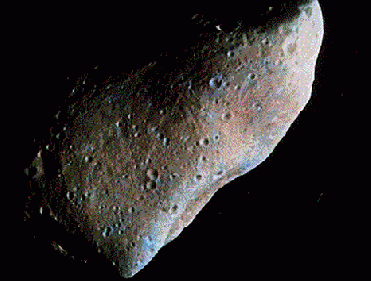
Final preparations on a replacement magnet ready to be lowered into sector 3-4. Official photo be CERN
PARIS (BNS): The world�s biggest particle accelerator, the Large Hadron Collider (LHC) will be up and running from next summer, but not at its full energy.
CERN (European Center for Nuclear Research) director general Robert Aymar said the top priority for CERN was to provide collision data for the experiments as soon as reasonably possible. �This will be in the summer of 2009,� Aymar said.
Project director Lyn Evans in a release to the media, from CERN headquarters in Geneva, said that they had a lot of work to do in the coming months. �But we now have the roadmap, the time and the competence necessary to be ready for physics by summer,� Evans said.
The LHC was launched amid great fanfare on September 10, but had to be shutdown soon after due to an electrical mishap. �The malfunction was caused by a faulty electrical connection between two of the accelerator's magnets. This resulted in mechanical damage and release of helium from the magnet cold mass into the tunnel. Proper safety procedures were in force, the safety systems performed as expected, and no one was put at risk,� the CERN said.
The organisation said that detailed studies of the malfunction have allowed the LHC's engineers to identify means of preventing a similar incident from re-occurring in the future, and design new protection systems for the machine. �A total of 53 magnet units have to be removed from the tunnel for cleaning or repair, of these, 28 have already been brought to the surface and the first two replacement units have been installed in the tunnel. The current schedule foresees the final magnet being reinstalled by the end of March 2009, with the LHC being cold and ready for powering tests by the end of June 2009,� the CERN said.
Giving details about the machine, CERN officials said that it was designed to collide protons with energies of 7 trillion electron volts apiece, and the super conducting electromagnets that steer the protons have to be cooled to two degree Celsius above absolute zero. �Parts of it have had to be warmed up for repairs, and we hope to have the entire ring cold by the end of June, and that collisions perhaps as high as five trillion electron volts could begin in August,� the officials said.
CERN spokesperson, James Gilles said that collisions at higher levels would not be possible by then because the magnets have not been �trained� to the levels necessary for seven-trillion-electron-volt operation. This is an �aggressive schedule�, Gillies said.
Talking about the accident, the spokesperson said that the collider had just begun to fire up its beams of protons (but had not actually begun to collide them), when, on September 19, an electrical bus connecting two magnets developed a spot of resistance, began to heat up under the load of 9,300 amperes and vaporised.
�Engineers reconstructing the mishap believe a spark punctured the blanket of super-cooled helium, which surrounds the magnets, and which itself is surrounded by a vacuum insulating layer. The helium flooded into the surrounding vacuum faster than relief valves could spray it into the main collider tunnel. The resulting internal pressures shoved some of the magnets, which weigh 10 tonnes, off their mounts and crunched the connections between them. The beam pipes that the protons shoot through were also punctured and contaminated with soot,� Gilles said.
CERN is taking time to repair instead of rushing with the job because of the coming winter season, in order to save money on electricity. Explaining the process, the official said that to fix it all, 53 of the superconducting magnets would have to be brought out of the collider, which is 300 feet underground, to the surface for inspection and repair, a process that has already begun. �Once they have all been fixed or replaced, the sector of the ring they occupy will have to be cooled all the way back down to near absolute zero again and tested,� the official said.
While performing diagnostic tests, the CERN engineers found two other spots around the ring with suspicious resistance readings similar to what preceded September�s failure. Both are in sectors that had already been qualified for 5 trillion-electron-volt operations without incident, they said.
�One of them is in a sector adjacent to the damaged sector and has been warmed up, which will be in focus this winter. The other is in a part of the ring that is still cold and there is no plan to warm it up,� Gilles said.
 Previous Article
Previous Article Next Article
Next Article












The Indian Air Force, in its flight trials evaluation report submitted before the Defence Ministry l..
view articleAn insight into the Medium Multi-Role Combat Aircraft competition...
view articleSky enthusiasts can now spot the International Space Station (ISS) commanded by Indian-American astr..
view article